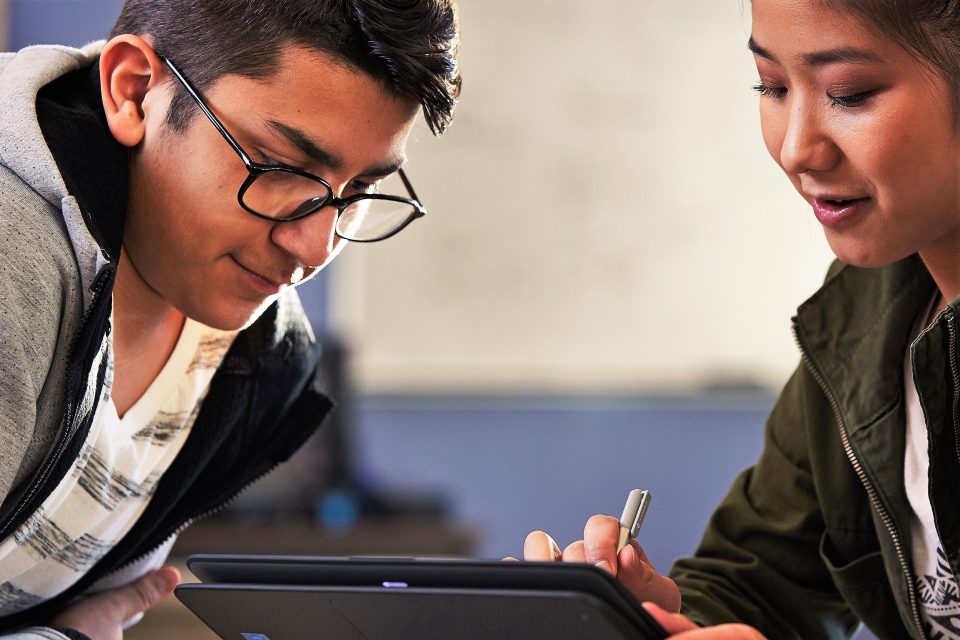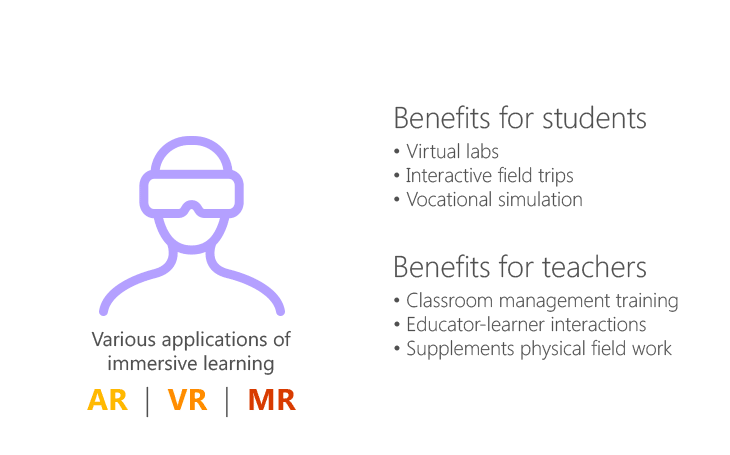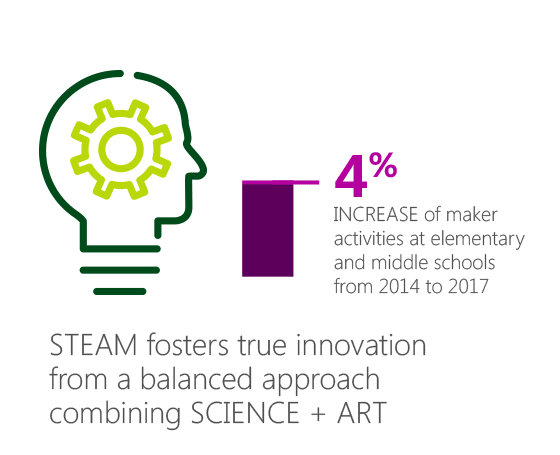Technology’s rapid evolution is shifting the way we approach education. Here are some emerging trends in EdTech that are reshaping education.
The future of education is exciting. As the education industry in Asia evolves in step with recent technological advances, new ways of teaching and learning have emerged — empowering educators with more solutions to better engage learners.
From artificial intelligence (AI) to immersive learning experiences, the rise of such technologies will impact the education space. But what do these progressions mean for educators, and what should they pay attention to?
Here are four technology trends that are driving change and reshaping the future of education:
1. AI will become an indispensable assistant to educators.
AI, with its “cognitive” ability to learn and solve problems, is making strides in the business world and sparking growing interest in the education sector as well. In fact, a recent report estimates a substantial growth with the CAGR of over 51% in the Asia Pacific AI market in EdTech by 2024.
AI can assist teachers by using its capabilities to inform practice, manage the complexity of new student-centered and project-based models of teaching and learning, and serve as a guide in making better day-to-day decisions. Data that is collected needs to be aggregated and processed to provide sensible output, which is not always an easy task but a worthwhile pursuit.
Presently, AI has been effectively deployed in areas such as classifying learning resources in terms of complexity, suggesting learning recommendations based on user behavior, and making education more universally accessible. For example, students from different language backgrounds can benefit from the innovation of Presentation Translator, a free plugin for PowerPoint, which creates and display real-time subtitles of what the teacher is saying below the presentation.
In preparing students for the rest of 21st century, there is a need for an ethical approach to AI to ensure that the privacy and security of individuals are maintained, along with equity. Educators should focus their efforts on utilizing AI to augment the things that matter most—human strengths like empathy, imagination and passion to accomplish goals beyond what either humans or machines can do alone. That way education doesn’t lose its most valuable aspect—the human touch.
2. Learning analytics will push personalized learning to the forefront.
Learning analytics are gaining prominence in education for several reasons. They provide actionable information for education institutions and enable educators to fine-tune their teaching approach based on data insights.
For example, data highlighting a student’s weakness in a particular subject can guide teachers toward formulating tailored revision plans, so that specific learning challenges can be addressed more effectively. With more information at our fingertips, especially data that illuminates gaps where experience alone wasn’t able to identify previously, the education-shaping process will evolve in a direction where analytics bear greater influence.
3. Immersive learning will gain extra momentum.
Sci-fi blockbusters like “Ready Player One” have captured the imagination of viewers with their futuristic vision of virtual reality (VR) and how it can impact education. Thanks to rapid advances in VR and augmented reality (AR), we are now seeing such technologies make their way from mainstream delivery models into contemporary schools.
Last fall, Microsoft offered new mixed reality (MR) headsets with innovation that reduces the numbers of sensors needed to provide an immersive experience. Schools are exploring new possibilities in immersive learning with virtual labs and interactive field trips, which provide realistic simulations of exploration while stimulating the imagination of students for deeper engagement.
The benefits of immersive learning are not limited to students. simSchool, a simulation-based teacher training tool, has been supporting educators for over ten years. Through simulations of virtual classroom scenarios, enriched with unique learner profiles and tasks, teachers are able to pick up competencies such as classroom management, which can’t be taught as well in a lecture.
4. STEAM will continue to foster new innovations.
STEAM — Science, Technology, Engineering, Arts, and Math — has been a buzzword in education for some time, and will continue to gain momentum. As society strives to meet the growing needs of a digital economy, the importance of STEAM education becomes more apparent, not only for the future of students, but also the future of nations.
Arts was added to the original STEM framework to foster true innovation, by combining the mind of a scientist or technologist with that of an artist or designer. The main difference between STEM and STEAM is that STEM was explicitly focused on scientific concepts, while STEAM investigates the same concepts, but does this through inquiry and problem-based learning methods.
Considering how our society is increasingly influenced by the intersections between the arts, engineering, mathematics, science and technology, STEAM will help to equip today’s students with a more approachable, practical, and relevant education to solve tomorrow’s problems with creativity and empathy.
For example, we’ve seen more schools incorporating “maker education” into their curriculum, with research from School Library Journal showing a four percent increase of maker activities at the elementary and middle school levels from 2014 to 2017. Schools are now making a wide range of high-tech equipment and materials such as 3D printers, microcontrollers and laser cutters available for students to design and build objects. Response from students has been overwhelmingly positive, indicating a demand for more STEAM-driven initiatives such as this, which empowers them with creative problem-solving skills.
Microsoft works with trusted partners to help education institutions capture these new opportunities through technology, delivering a large ecosystem of both on-premises and cloud tools, services and applications designed specifically for the industry. Find out how Microsoft can help you capture opportunities in technology to improve education at Microsoft Education or the Microsoft Educator Community Portal.








